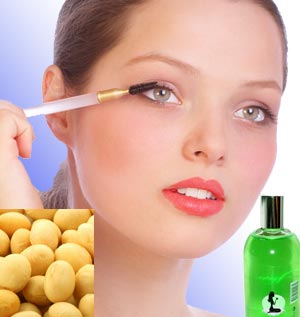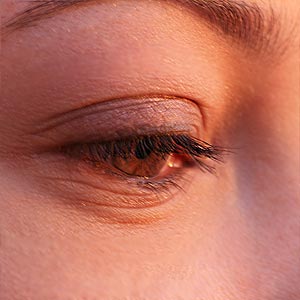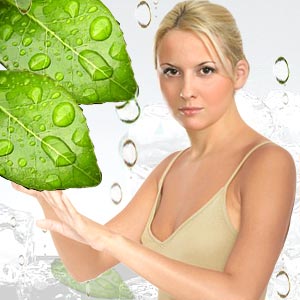Alpha Hydroxy Acid

Women seeking youthful skin would be familiar with the terms 'alpha hydroxy'. It is a wonder ingredient found in cosmetic and skin care products. Alpha hydroxy acids (AHA) belong to the family of acids derived from fruit, milk or sugar. These alpha hydroxy acids are also called fruit acids or citric acids.
It is not surprising then that this product has been used for thousands of years as a skin rejuvenating agent. For long time now, women have been using lemon juice for bleaching freckles. The famous Greek queen Cleopatra is reported to have bathed in sour milk - lactic acid, to improve her complexion.
With increasing research into what causes wrinkles and aging, hydroxy acids have gained in popularity.
Alpha hydroxy acid products
Hydroxy acids are a common additive to numerous skin care products including moisturizers, cleansers, tones and masks.
As such, alpha hydroxy acids are chemicals found in natural products. They act as an exfoliating agent that causes the top layer of the dead skin cells to slough off thereby encouraging the regrowth of fresh and new skin with improved texture, tone and color.
The alpha hydroxy acids found in cosmetic applications are derived from fruit, milk and sugar. The most commonly used AHA is glycolic acid and lactic acid as they have a special ability to penetrate the skin. Following are the five major types of AHA found in skin care products and their sources:
Glycolic acid - sugar cane
Lactic acid - milk
Malic acid - apples and pears
Citric acid - oranges and lemons
Tartaric acid - grapes
Alpha hydroxy acid products aid in reducing signs of skin aging such as roughness, discoloration, sun damage, acne, fine wrinkles and age spots. On regular use of these products, smoother, firmer and youthful skin is revealed.
Other than moisturizers, cleansers and masks, anti aging products, acne treatment products, toners, eye cream peels, and foundations contain alpha hydroxy acids.
While shopping for a cosmetic or skin care product with alpha hydroxy acid, look for AHA, BHA, glycolic acid, lactic acid or salicylic acid in the listed ingredients. It is safe to start with a concentration of 5-8% and a pH of 3-4 to minimize skin irritation. It is advised to use a good sun screen with alpha hydroxy acid products.
Alpha hydroxy acids and skin treatments
AHA is effective in the treatment of dry skin, acne, liver and sun spots, lessening fine facial wrinkles and improving skin textures. Recent research reveals that AHA can reverse precancerous skin lesions which are due to long term sun exposure.
AHA works mainly as an exfoliant; causing the cells of the epidermis to become unglued, thereby allowing the dead skin cells to slough off and making room for regrowth of new skin. AHA may even stimulate the production of collagen and elastin.
AHA also works by loosening and removing dead skin cells. They increase skin thickness up to 15% in patients with sun damaged thin skin.
AHA is found in low concentrations in many cosmetics, in medium concentrations in doctor's offices and also in high concentrations. When using high concentration of AHA, it is best applied by a professional at intervals of three to six weeks.
Alpha hydroxy acid peels
The AHA commonly used in peels in glycolic acid. Unlike other chemical peels, AHA is not toxic to the skin.
AHA in various concentrations is used in chemical peels. However, AHA sold to customers has a concentration of less than 10%, while trained cosmetologists use AHA products that have a concentration of 20-30%.
Chemical peels are similar to microdermabrasion, erasing fine lines and giving the skin a smoother appearance with 1 to 3 applications. However, these treatments must be repeated every 3 to 6 months to maintain skin appearance.
Doctors use AHA 50-70% concentration to remove surface scars and the effects last longer, up to 2-5 years.
It should be remembered that the higher the concentration used in chemical peels, the more skin irritation occurs. Severe redness can be seen with 50-70% concentration and oozing skin can last for 1-4 weeks.
Precautions before using alpha hydroxyl acid peels
If you have any of the following problems, it is best not to have the peel done and doctor has to be informed immediately.
- Stop using Retina A and exfoliating sponges at least three to four weeks before first peel.
- All forms of hair removal should be stopped at least three to four weeks before the peel.
- No cologne or after shave should be applied. Also, shaving on the day of the peel should be avoided.
- Use of Accutane within past six months.
- Cold sores
- Facial warts
- Pregnancy
- Keloid or hypertrophic scars
- History of sun allergies
- Bad reaction to a peel
- Recent radiation treatment for cancer
- Sun burn or significant sun exposure in the last couple of days
- Surgery or cryosurgery within the last month in the area that is planned for peel
Alpha hydroxy acid and acne
Numerous studies have revealed that AHA can be used to improve acne. AHA can increase the thickness of sun damaged skin by about 25%. Lactic acid and glycolic acid are the most common AHA used in the treatment of acne. AHA can be combined with Retin-A for preservation of precancerous skin lesions. This combination can also be effectively used to reverse some of the changes caused by skin aging. These include brown sun spots, fine lines and wrinkles.
- The product can be used every day on the first on the first week.
- While women can use AHA in the morning, men can use it after a shave. Wait for about 15 minutes before applying makeup or sunscreen over top of the AHA.
- AHA should be applied all over the skin area, not just to the spots that needs to be treated. This will help prevent new lesions.
- AHA when applied on the skin can burn for a few minutes. Cool water need to be applied to the skin before applying AHA.
- Use the product if there is no problem experienced after the first week.
- AHA when used on acne may make the pimples more inflamed. This is a good sign and it suggests that the treatment is working.
Alpha Hydroxy Acid and stretch marks
AHA is perhaps the most popular treatment to get rid of stretch marks. Stretch marks occur on the skin as a result of rapid weight gain or growth when the skin is forced to stretch quickly.
Every brand of skin creams and stretch mark treatments in the cosmetics section contain AHA. These acids, derived generally from sugarcane or dairy products are potent exfoliating compounds. When AHAs are applied to the skin they break down the protein that hold dead skin cells together, dissolving the dead skin and allowing newer and younger skin to take its place.
Alpha hydroxy acid side effects
The use of alpha hydroxy acid may cause skin irritation in some with sensitive skin. Symptoms include redness, burning, itching, sensitivity, blisters, chemical burns, increase in sunburn and pain. The more serious reactions seem to occur from products that are known as 'peels'.
Some may experience scaring with darker colored skin pigments or brown discoloration of the skin. However, the damage caused from AHA to those with sensitive skin is reversible and heals over time.
It is safe to use AHA in cosmetic products as long as AHA level is no higher than 10%. According to the Fair Packaging and Labeling act in the US, cosmetic products must list the net quality of ingredients.
Because of some concerns over the side effects of AHA, FDA in 1997 announced certain guidelines for safe use by consumers with the following guidelines:
- The AHA concentration should be 10% or less
- The final products has a pH of 3.5 or higher
- The final product must have an effective sunscreen in the formulation or warn people to use sunscreen products.
Some pertinent tips on safe use of alpha hydroxy acid formulation:
- It is always better to first use one single product with AHA as exfoliant and then choose other skin products or cosmetics that does not contain AHA to reduce the likelihood of skin irritation.
- Using AHA in a moisturizer base is one of the best combinations of products.
- Cleansers containing AHA are not effective as AHA must be absorbed in the skin to work. Cleansers are washed off before the absorption occurs.
- As sunscreens are not stable at the pH required to make AHA effective, they are not used in sunscreen formulations.
- As mentioned elsewhere in this article, AHA works best in concentration of 5-7% and at a pH of 3 to 4.
Top of the Page: Alpha Hydroxy Acid
Tags:#alpha hydroxy acid #alpha hydroxy acid side effects #alpha hydroxy acid acne #alpha hydroxy acid products #alpha hydroxy acid peel #alpha hydroxy acid stretch marks
 Beauty
Beauty Facial Skin Care
Skin Care Essentials
Men's Skin Care
Beauty Control - Sunscreen
Sunburn Remedies
Natural Sunblock
Beauty Care Routine
Skincare Tips for Teens
Dry Skin Care
Asian Skin Care
Black Skin Care
Pregnancy Skin Care Tips
Oily Skin Care
Skincare For Aging Skin
Common Skin Problems
 Crow's Feet
Crow's Feet Hyperpigmentation
Melasma
Acne during Pregnancy
Back and Chest Acne
Adult Acne in Women
Excessive Sweating
Whiteheads
Cause Dark Eye Circle
Chapped Lips
Age Spot
Skin Cancer Symptom
Skin Care Treatments
 Chemical Skin Peels
Chemical Skin Peels Radio Frequency Skin Tightening
Electroporation Beauty Treatment
Home Remedies for Large Pores
Dermaplaning Benefits
Manuka Oil Benefits
Skin Needling
Cheek Fillers
Cosmetic Dermal Filler
Skin Lightening
Skin Exfoliation
Bamboo Massage
Dry Skin Brushing
Stretch Mark Removal
Freckle Removal
Rosacea Treatment
Skin Care Routine
Tretinoin Cream Benefits
Alpha Hydroxy Acid
Homemade Face Mask
Bath Salt Recipe
Tea Tree Oil
Wrinkle Cream
Almond oil Benefits
Jojoba Oil
Handmade Soap
Eye Creams
Facial Cleanser
Botox Cosmetic
Benefit of Aloe Vera
Shea Butter Benefit
Top of the Page: Alpha Hydroxy Acid
Popularity Index: 100,779

